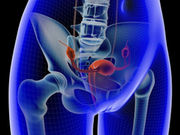Higher percentage of women have clinical response for dysmenorrhea, non-menstrual pelvic pain
MONDAY, May 22, 2017 (HealthDay News) — Lower- and higher-dose elagolix are beneficial for women with endometriosis, according to research published online May 19 in the New England Journal of Medicine to coincide with the 13th World Congress on Endometriosis, held from May 17 to 20 in Vancouver, Canada.
Hugh S. Taylor, M.D., from the Yale School of Medicine in New Haven, Conn., and colleagues conducted two phase 3 trials (Elaris Endometriosis I and II [EM-I and EM-II]) to examine the impact of lower-dose (150 mg once daily) and higher-dose (200 mg twice daily) elagolix versus placebo for women with surgically diagnosed endometriosis and moderate or severe endometriosis-associated pain. A total of 872 and 817 women, respectively, underwent randomization in Elaris EM-I and Elaris EM-II; 74.9 and 77.4 percent, respectively, completed the intervention.
The researchers found that the percentage of women who had a clinical response with respect to dysmenorrhea was 46.4 and 75.8 percent in the lower- and higher-dose elagolix groups, respectively, compared with 19.6 percent in the placebo group in Elaris EM-I; the corresponding percentages were 43.4 and 72.4 versus 22.7 percent in Elaris EM-II. With respect to non-menstrual pelvic pain, the corresponding percentages were 50.4 and 54.5 versus 36.5 percent in Elaris EM-I, and 49.8 and 57.8 versus 36.5 percent in Elaris EM-II.
“Both higher and lower doses of elagolix were effective in improving dysmenorrhea and non-menstrual pelvic pain during a six-month period in women with endometriosis-associated pain,” the authors write.
The study was funded by AbbVie, the manufacturer of elagolix.
Copyright © 2017 HealthDay. All rights reserved.








